Way of the Warrior
"The successful warrior is the average man, with laser-like focus." ~ Bruce Lee
One-time or recurring donations can be made at Ko-Fi
You can listen to me read this article here:
This is an Inspirational Essay. We all need a little inspiration in these dark times!
“Do not sleep under a roof. Carry no money or food. Go alone to places frightening to the common brand of men. Become a criminal of purpose. Be put in jail, and extricate yourself by your own wisdom.”
-Miyamoto Musashi, The Book of Five Rings
Yesterday, I came to New York. It’s snowing outside. It’s cold for a Los Angeles native like me, but also incredibly magical.
As I sat drinking my coffee this morning, watching the snow gently falling outside, I decided it was definitely time for an Inspirational Essay about the way of the warrior.
My training in martial arts, weapons, boxing and kickboxing has been an integral part of my life for over thirty years. I tell my kids if it weren't for my training, I'd probably be in a looney bin or dead. It's kind of a joke, but not really. My training has kept me sane when the world around me was insane. It’s kept me safe when danger breathed down my neck. That’s not to say I haven’t stumbled and fallen along the way.
Confucius said, “Our greatest glory is not in never falling, but in rising every time we fall.”
You get up and you keep on going….
As everyone who reads my work knows, I am a firm believer in keeping our histories alive. Orwell said, "The most effective way to destroy people is to deny and obliterate their own understanding of their history."
Orwell wasn’t just referring to the histories we read about in books or learn about in school. The most important histories are our own. We need to share them with our children and grandchildren, exchange stories with our friends, so they are not forgotten.
Before my second mother-in-law Joyce MacKenzie married Walter “Tim” Leimert II, she was an actress being groomed by Louis B. Mayer of MGM Studios to become a star. That's a story for another time—and a good one—but for now, suffice it to say that I loved sitting on her sofa, listening to her stories and looking through her photo albums. Sadly, I don’t know what happened to those albums. I wish I had them for my sons.
One of my best childhood memories is sitting in my dad’s study at night and listening to the poems he would recite and the stories my mom would tell. Some of those stories included our Mennonite ancestors, as I’ve shared in other essays. Before Mom died, she collected those stories into four handmade books, one for each child. She called it A Far Journey and it’s a treasure to be passed down from generation to generation.
So, without further ado, here's reflections on the Way of the Warrior and what it means to me, in the hopes that it will inspire others.
Ever since I was a teenager, I wanted to train in martial arts. I wanted to be a ninja. Like Bruce Lee, but a girl. Why couldn’t I be that?
When I asked my parents, they refused. We were an evangelical Christian family. My father preached and wrote books against the infiltration of eastern mysticism into Christianity. Martial Arts was surely of the devil. I thought that was too ridiculous and really unfair! But no matter how much I pleaded; I could not change their minds. It would take until I was thirty years old before I was able to train. I sometimes wonder how different my life might have been if I’d been allowed to do it earlier.
By the time I was thirty, I’d already fought my share of battles, including extricating myself from a physically abusive marriage. Never again did I want to feel the fear and impotence that I'd felt during those dark London days. Never again did I want to walk behind a man because I'd learned the hard way that to walk even one pace in front of him was worthy of punishment. Never again did I want to crawl on my hands and knees, cleaning up my own blood, splattered on the floor and walls. Never again did I want to climb up or down the stairs past my neighbors, head down in humiliation, unable to face their disdainful expressions. Everyone in the old Victorian building where we lived knew what was going on, yet no one helped me.
Often, I imagined what it must be like to walk down the street fearless and proud. I wanted so badly to know how that felt! I was six feet tall after all. I should be able to look straight into the eyes of every man and woman. They should be the ones dropping their gaze, not me.
My life started to change when I made a choice to run in Kensington Gardens. It was spring; the flowers were just blooming, and the leaves, so young and green, were sprouting. The world was waking up and so was I. Every day, no matter how I felt, no matter all the excuses I could find as to why I shouldn’t, I kept on running. And every day, I grew stronger. Running took me out of my self-absorption and self-pity. It reminded me that there was an entire world out there, not just the dark prison my husband had made me think was all I deserved.
Through the physical activity of running, I found the courage to leave my abusive husband. I returned to Los Angeles with my four-year-old daughter, determined to learn to fight at last.
Still, when the day came for me to enter the dojo where my younger brother trained in Tang Soo Do, I did so with some trepidation. What if they looked at me with disdain, saying I’m too old. Thankfully, before I could turn around and leave, a woman called out a greeting, walking across the matt towards me. Her name was Barbara Bernhart Goldstone, an accomplished martial artist with multiple black belts.
Barbara poo-poohed my concerns about my age. “It wouldn’t matter if you were a hundred. Never hold back from what you want to achieve. Look at me, I’m forty-three.”
I couldn’t believe she was that much older than me. Not because she’d injected her face full of Botox or anything like that, but because of how naturally beautiful and confident she was, how strong and healthy. I decided I wanted to be just like her.
I dedicated myself to training every day. If I wasn’t in the gym, my daughter tagging along and imitating everything I did from the side of the matt, I was running with my dad or practicing katas under the trees. I’m glad to say my parents had grown more tolerant over the years and no longer objected to my training. Better late than never!
Tang Soo Do means “the emperor’s fighting hand”. This Korean style had been brought to the United States and modified by Chuck Norris and Pat Johnson. I earned my first- and second-degree black belts from ninth degree Grand Master Pat Johnson, who sadly passed away last year.
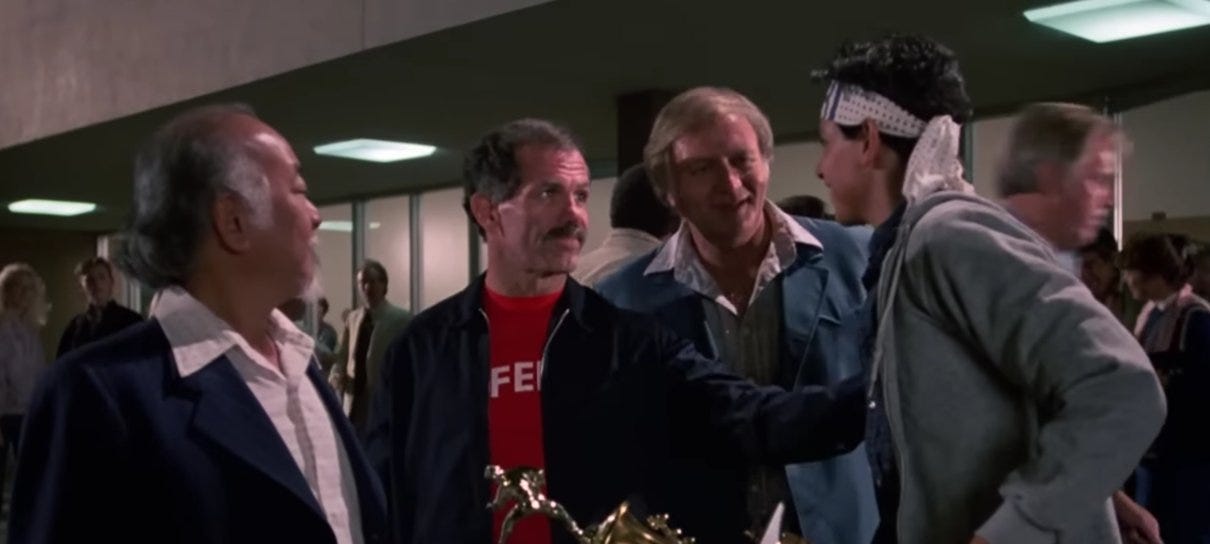
In the short video below, Pat tells the story of how he met Chuck Norris and how the American style was developed. I had so much admiration for Pat. He was an all-American, old-school tough guy who didn’t suffer fools, but with a heart of gold.
I started training in Okinawan weapons (tonfa, nunchuk, staff, and scai) with Kiyoshi Shiraz Mortez Alborzi, an eighth-degree black belt who holds black belts in more styles than I can list here. You can see his deadly fighting skills, especially the ankle-sweep, which I experienced more than once in sparring, in the video below.
Alborzi loved telling me stories of his past and I loved hearing them. He was from Iran. He had trained the Iranian military and had been captain of the Iranian National Karate Team. After tournaments, the team was expected to bow to Ayatollah Khomeini’s picture and that’s what they did, no matter how they felt about it. One day, Alborzi had had enough. He was so disgusted at what he was forced to do, bowing to the image of such an evil man, that he refused. For that he was imprisoned.
Most people these days would think, how foolish. What’s the big deal? It's not worth losing your freedom. Just bow.
But that is no kind of freedom. Real freedom comes when no one owns your body or mind. When no one controls you through bribery or fear.
While in prison, I believe it was twice that Alborzi was driven to the desolate countryside, made to kneel on the ground and a gun was pointed at his head. Twice the gun was withdrawn, and he was taken back to prison. These were mind games, meant to break him.
But when you have lived for years practicing self-discipline, heightening your awareness of not only the world without but the world within, it is very hard to break such a man or woman. You can imprison the warrior’s body, but you can never take away his mind. Okay, yes, minds can be broken, but it isn’t easy to break the mind of a warrior. Trying to do so is what drives those who torture and torment further into madness while the warrior’s mind grows ever clearer.
Discipline, as understood by a warrior, is creative, open, and produces freedom. It is the ability to face the unknown, transforming the feeling of knowing into reverent astonishment; of considering things that exceed the scope of our habits, and daring to face the only war that is worthwhile: The battle for awareness. ~ Carlos Castaneda
Some subscribers might take offense to me quoting Castaneda. He was described in a March 5, 1973, issue of Time, as "an enigma wrapped in a mystery wrapped in a tortilla". There was much speculation about whether the stories of his past life and his training with “Don Juan” were true or not. There was even some speculation that the image on the Time cover was not of himself. He was loath to answer these questions. In this present age when everyone hides behind a fake facade and makes no secret of it, while at the same time willingly submitting the most intimate details of their lives (their “data”) to feed AI, Castaneda’s way of telling his personal stories and the public’s efforts to interpret them, was a prophetic warning for us all.
In his defense, Castaneda said, "To ask me to verify my life by giving you my statistics ... is like using science to validate sorcery. It robs the world of its magic and makes milestones out of us all."
As a newly divorced single mother, I was warned by “well-meaning” members of my parents’ church that statistically my daughter didn’t stand a chance of turning out well. I shot back that my daughter was not a statistic. To put a small child into a box can be a lifelong prison sentence and that’s another battle I fought, even more so with my sons.
Statistics are said to tell the truth, but they are just another way to lie, conveniently agreeing with the perspective of whoever is paying to have the statistics created in the first place.
When I first started InsideOUT Writers, the creative writing program for youth facing life sentences for serious crimes, I was scoffed at by society’s privileged members, even by family and friends. “How do you know they are telling you the truth? They’re criminals. They lie about everything. They’re scamming you.”
I couldn’t help but be amused at their condescending attitude. After all, so many of them were the biggest liars of all. I saw them at the LA Country Club, at fundraisers for good causes, at exclusive restaurants and movie premieres. They tried so hard to maintain a facade of success and respectability. Yet behind it all were hidden lives of abuse, addiction and corruption.
“What does it matter if they lie?” I told them. “They’re telling stories, just like we all do. If they’re so good at telling their stories that I believe them, then they’ve succeeded as writers, and they deserve praise. The writing table is a safe place where they are free to write whatever they want.”
And the amazing thing was that because the youth knew no one was judging them and they could say whatever they wanted, the stories they told were often so much wiser and more powerful than the writing I’d seen when I had taught in affluent schools.
I don’t remember all of the details, but eventually Alborzi was released from prison, and he was able to escape over the mountains, out of Iran. That was how he came to America and found himself in that dojo, training me, imparting his knowledge and his wisdom.
Like all the fighters I’ve ever known, Alborzi was a macho kind of guy. The classes were brutal and there weren’t many women, in fact, most of the time, I was the only one. Yet, when he had to leave the class for a phone call or something of the sort, he always asked me to teach in his place. I can tell you; the guys weren’t at all pleased by that. But for me, considering my past, it was the greatest honor.
I will never forget when one time, I was teaching a class in a different dojo and when I gave a command, a strong tall young man barked out, “Yes, sir!”
“Do I look like a sir to you?” I demanded.
He was completely embarrassed. “No, ma’am,” he said.
Of course, women are not as strong as men physically, I know that very well. Although, actually, there are plenty of men I could no doubt overpower, and I did so when sparring. But that’s not what it means to be a warrior. The physically weakest person can be the strongest warrior and I’ve known many who have overcome the most incredible odds to climb the highest mountains. There is no “one size fits all” when it comes to winning the fight.
When it came time to test for my black belt in Okinawan weapons, I found out I was pregnant. I still wanted to test; I had trained so hard. The grand master didn’t want me to test. I don’t remember his name, but he was unbending, ex-military. A pregnant woman will never have the stamina and it could be dangerous for her, he argued. Yes, that might have been true for most women. But I was not most women. I was in top physical shape. I expected Alborzi to agree with the grand master, but he stood up for me, insisting that I be offered a chance to prove myself. The grand master said okay—on one condition. I had to take a pretest and if I passed, he would allow me to test.
Alborzi came with me on the day of the pretest. It was far more demanding than the real test, since all the focus was on me, and I had no time to rest between sections. It was also terribly hot in the dojo, with no air-conditioning.
I think the plan was to fail me. But I completed every kata and fighting move with as much energy as if I wasn’t pregnant and I made no mistakes. Under Alborzi’s watchful eye, the grand master had no choice but to allow me to test.
I was confident I’d pass the real test. After all, I’d passed the pretest under grueling conditions. The next week, after a long day of testing, all the contestants stood in a row, waiting for the results. There were at least fifteen of us. I knew I had done my best, as good as anyone else, if not better than most. Yet everyone’s name was called except mine, and they were all awarded black belts—every single one, even those who had made bad mistakes. Then, the grand master turned to me and called me forward. I was given a low-ranking belt, I don’t remember which one, it didn’t matter.
I was so angry and disappointed. He had purposely humiliated me in front of everyone else. His wife was there, and I saw that she was pregnant. I thought to myself, wow, I get it. I sure would hate to be her.
Afterwards, Alborzi came up to shake my hand and congratulate me. For what? I wanted to know, angrier than ever. Why hadn’t he said anything?
Alborzi looked mildly amused, and I had to breathe deeper to control my emotions.
“It doesn’t matter what that man said or did,” he told me. “You know and I know that you are a black belt. You did more than anyone else in that room. You trained harder and you overcame more obstacles. Getting a belt from someone that, let’s face it, you don’t even respect, means nothing. In fact, you should be proud that he ignored you. It means you got to him. You won the battle. Let the anger go. It’s of no consequence.”
I never forgot that lesson. It sustained me years later when the wealthy board members of InsideOUT Writers ousted me, doing all they could to destroy my reputation, punishing me for daring to fight against their elitism.
Wow those Persian men! Looking back over the years, I have to say that some of the best men I’ve known are Persians. And by the way, in Los Angeles those who’ve escaped from Iran don’t like being called Iranians. They prefer Persian. I go into the reasons why in THE RELUCTANT REVOLUTIONARY, the story of one of my dearest friends, Alec, and his harrowing adventures in Middle America during the Iranian Islamic Revolution in 1979. It’s a cautionary tale that we’d do well to heed today.
Then there’s Faramarz, my landlord when I lived in a charming bungalow on Topanga Canyon Road. Once, over the best Persian food, cooked by him, he told a horrifying story of what life was like back in Iran. He’d been swimming one day in a lake when he saw a woman drowning. Men and women weren’t permitted to swim together, and a clear line separated them from each other. None of the other men were doing anything. Faramarz didn’t think twice. He swam across the line and pulled the woman to shore, giving her mouth to mouth and saving her life. For that, he was imprisoned.
Now, here he was, so many years later, having escaped that life and telling the story to an American woman, under twinkling stars in a flower-scented garden.
Once I achieved my second-degree black belt, I went on to train in Eskrima, a Filipino fighting art involving everything from sticks and knives to empty handed techniques to fighting on the ground. Learning Eskrima was when I began to gain confidence as a fighter and to understand more deeply what it meant to be a warrior.
Below is a video of Supreme Grandmaster Cacoy Canete who fought in over 100 no-rules Eskrima matches and is considered to be the preeminent Doces Pares warrior. In the video, you can see how old he is. But his knowledge and ability are so engrained from years upon years of fighting, that he outfoxes his opponent instinctively and effortlessly. He hardly even moves his body. I was only able to attend a few of his seminars.
But I was fortunate to train with his protégée, Senior Grandmaster Anthony Kleeman.
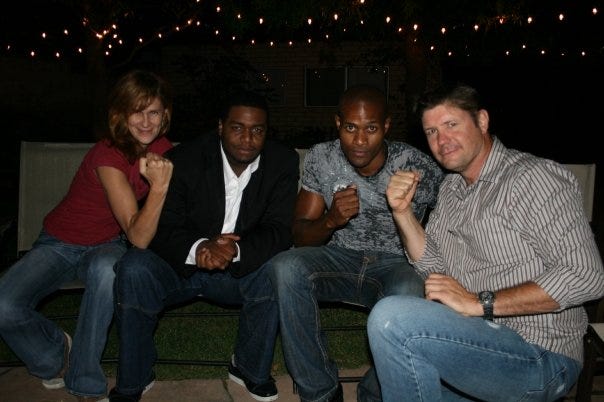
There is nothing quite as invigorating as donning full samurai gear and beating on your opponent full force with sticks. I trained for about four years and then I had no time to pursue it any further. But I still have my sticks and I practice on my own.
With Anthony, I started training at Benny Uriquez’s gym in full contact boxing and kickboxing. I was complimented on my fighting skill and was asked by Stan Ward, a brilliant trainer of some of the most successful female fighters at that time, to become a professional boxer.
“Give me six month and I’ll train you to be in the best shape of your entire life.” He wanted me to fight Mohamad Ali’s daughter, Layla Ali. Wow. I couldn’t believe he was serious. Once again, I thought, surely, I’m too old. But he insisted I wasn’t.
I loved fighting. I had come so far. The person I’d once been, cowering in the shadows of that London flat, fearing the fist of my husband, was long gone. And yet, I had learned to accept all of myself, even that frightened stranger. It was because of my past that I was so strong now.
At the time that I was offered to fight professorially, I was in the thick of building InsideOUT Writers, and I was a single mother with three children. I knew the only way to win such a fight would be to devote 100% to training for those six months. But if I did that, the writing program and my children would suffer.
Saying no to Stan was one of the hardest decisions of my life, but I’ve never regretted it. It was the right thing to do. Benny kindly came to speak to the kids in juvenile hall and it was a big highlight in their lives. Many of those young people who had been written off by society went on to attend college. Some became doctors and lawyers.
Below is a video of the one and only Benny “the Jet” Uriquez.
Peter “Sugarfoot” Cunningham is a living legend and 7-time World Champion Hall of Fame kickboxer, and someone I trained with and knew well in those days. If you want to watch some incredible old-school kickboxing, the highlights in this video are fantastic.
I wish I had videos of my fighting days, but I never took any back then. I didn’t think about it. Here’s a couple of videos of my training. The one below is focused on footwork. You can see how much taller I am than “ZigZag”. I had to bend down low to get under his punches but what a great trainer he was! It’s pretty fuzzy, sorry about the quality.
Over the past ten years or so, I’ve traveled extensively, to many different countries. Everywhere I go, I find ways to train, and I meet amazing fighters from whom I learn much. I’m also committed to sharing my knowledge by training others.
Here’s Lake Arenal, Costa Rica, where I was staying in the home of the former owners of a boxing gym where I had been a trainer. I didn’t have gloves and the bag wasn’t for kicking, but when you love to train, you find a way.
Here’s Phoenix, at Pro Edge Boxing. There’s always someone who will hold the mitts for you. Always love mitt work.
Below, 1) Training women in Tilaran, Costa Rica. None of the women spoke English and my Spanish is terrible but somehow, we made it work. 2, 3 & 4) Training folks in Woodland Hills, California, at Tarzana Boxing, which no longer exists.
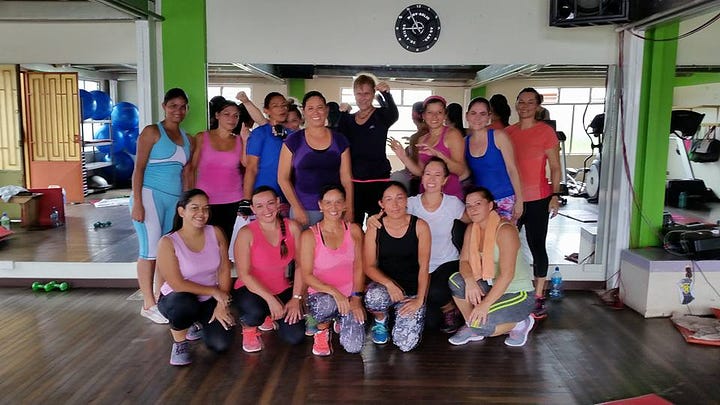
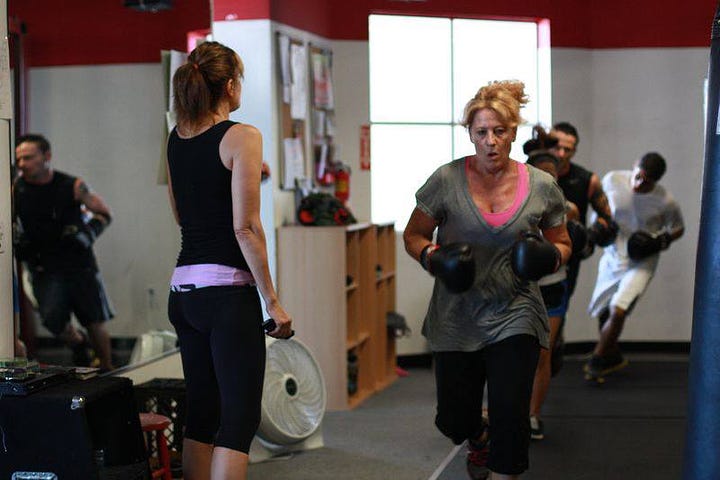
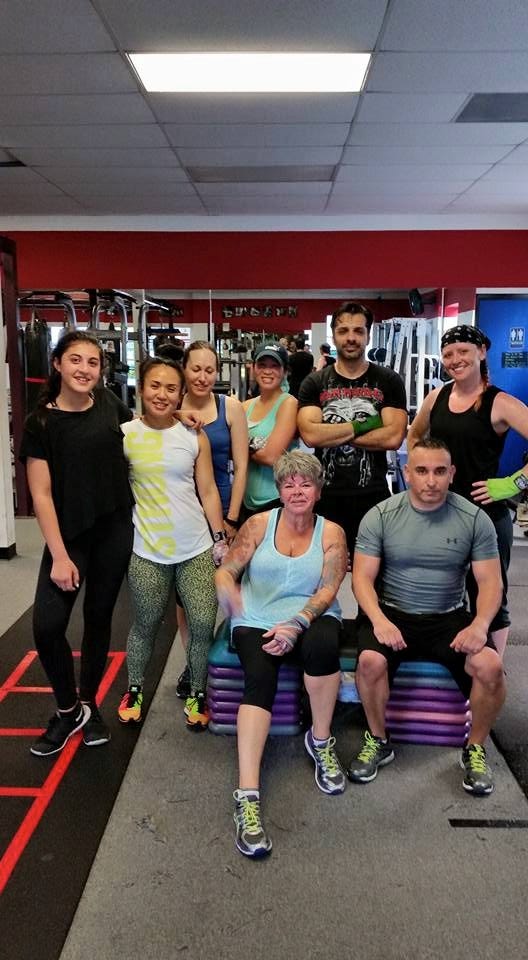
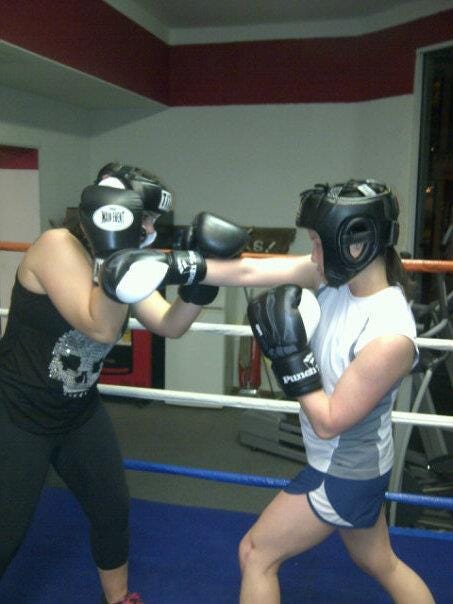
And back in Phoenix, where I taught kickboxing.
If every child in elementary school was required to train in some form of martial arts, the world would be a very different place. Children would learn respect for themselves and others. They would learn focus, dedication, and the power of mind over matter. They would aspire to a higher standard. When I first started in Tang Soo Do, I was told, if you only focus on a point as low as your stomach, you will never kick any higher than that. You have to look beyond what you think you are capable of, up to the sky. Maybe you’ll never kick that high, but you’ll never know until you try.
If I can inspire others to aim a little higher, to push a little harder in whatever area they choose to pursue, and then to take the time and effort to share their knowledge and wisdom with others, then all this writing has been worth it.
In 1966, the Chinese Cultural Revolution was launched by Mao Zedong, causing unbearable suffering for millions of people. It’s thanks to writers like Lijia Zhang who knew the power of words and wrote down her memories, that we can learn from those horrors and fight to stop them from recurring. In her moving essay titled: China’s Cultural Revolution must be confronted, she describes the absolute horror and irrationality of the times with what happened to her grandfather:
“Spotting my grandfather’s stiffened body hanging from the wooden beam in the hall was my earliest memory. I was four then and the year was 1968, at the height of the Cultural Revolution. Grandfather, a small-time grain-dealer in his 50s, took his own life because he was terrified that his politically problematic background – he wasn’t from a poor farmer or worker’s family – would land him with the fate he had often witnessed: humiliation and torture at public gatherings.”
“During the Cultural Revolution, Chairman Mao practiced a prerogative system which protected the privileged stratum, a fertile breeding ground for corruption. While the ordinary people survived on rationed rice, luxury villas were built for Mao and other top leaders.”
All of this sounds too familiar. We celebrate the billionaires. We might hate them, but we still wish we could be like them. They represent the height of success in this materialistic society while more and more of our freedoms are being taken from us, and we refuse to see it.
Lijia Zhang worries that our histories will be forgotten, and we will never learn to do better:
Ba Jin was a renowned writer who described the movement as a “spiritual pollution”, and requested – on his death bed – that the government build a Cultural Revolution Museum. Many renowned writers, such as Feng Jicai, who risked his life by recording the stories of that mad decade, have joined in the chorus. So far, their wishes have not been fulfilled.
The official stance that ignores what happened and encourages Chinese citizens to forget about it is deeply disturbing. As Confucius says: “Study the past if you would define the future”; we have to study the past, especially a past event of such significance.
It’s strange to think how quickly recent horrors of Covid have been wiped from our minds, almost as if they never happened. People are resentful if you bring it up. Nobody wants to remember all that “negative” stuff. Just move on. Move on to what? To the next time when it happens all over again?
Our histories are being erased. So subtly amongst the noise of the machines that people aren’t noticing it. This is what I fight most against in my writing. It is why I weave stories from my past in my essays. We cannot understand the present or prepare for the future if we forget the past. If we submit so easily to the gaudy lights of virtual worlds and turn away from the stark reality of the fight, we will lose who we are. If we cease to practice deep reflection in favor of immediate gratification, we risk sinking into the quicksand of the soundbite and never rising again.
Socrates said, “When I was young, I believed that life might unfold in an orderly way, according to my hopes and expectations. But now I understand that the Way winds like a river, always changing, ever onward. My journeys revealed that the Way itself creates the warrior; that every path leads to peace, every choice to wisdom. And that life has always been, and will always be, arising in Mystery.”
We are none of us statistics. Life is, and will always be, a mystery. Don’t let anyone tell you otherwise.
For those who have not pursued the Way of the Warrior, it’s hard to understand how one can fight and still believe the best way is peace. But as I said, if everyone trained from a young age, I very much doubt there would be so much violence in the world. It is never about the physical fight. The Way of the Warrior always takes you deeper into the mental and the spiritual. The more we learn, the more we are humbled by how little we know.
Here’s a fun thought to end on, a new take on the story of Rapunzel:
Don’t stay in the ivory tower, safe and secure, looking out at the world through the frame of a window—or rather the frame of a computer or a smart phone screen or now, virtual glasses. Get out the power tools, make your escape and definitely, listen to some Tina Turner along the way.
Thank you for reading and listening! Please subscribe, comment and share.




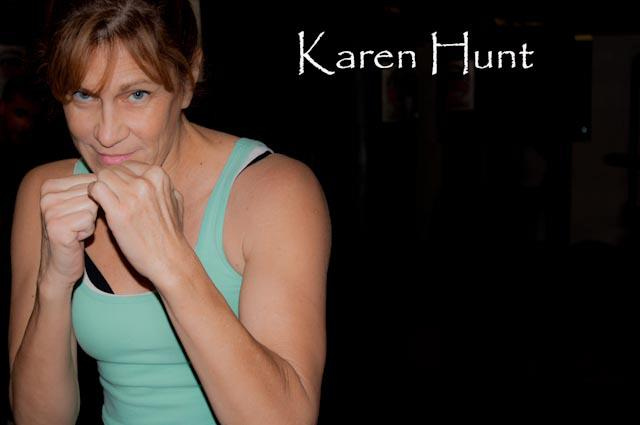

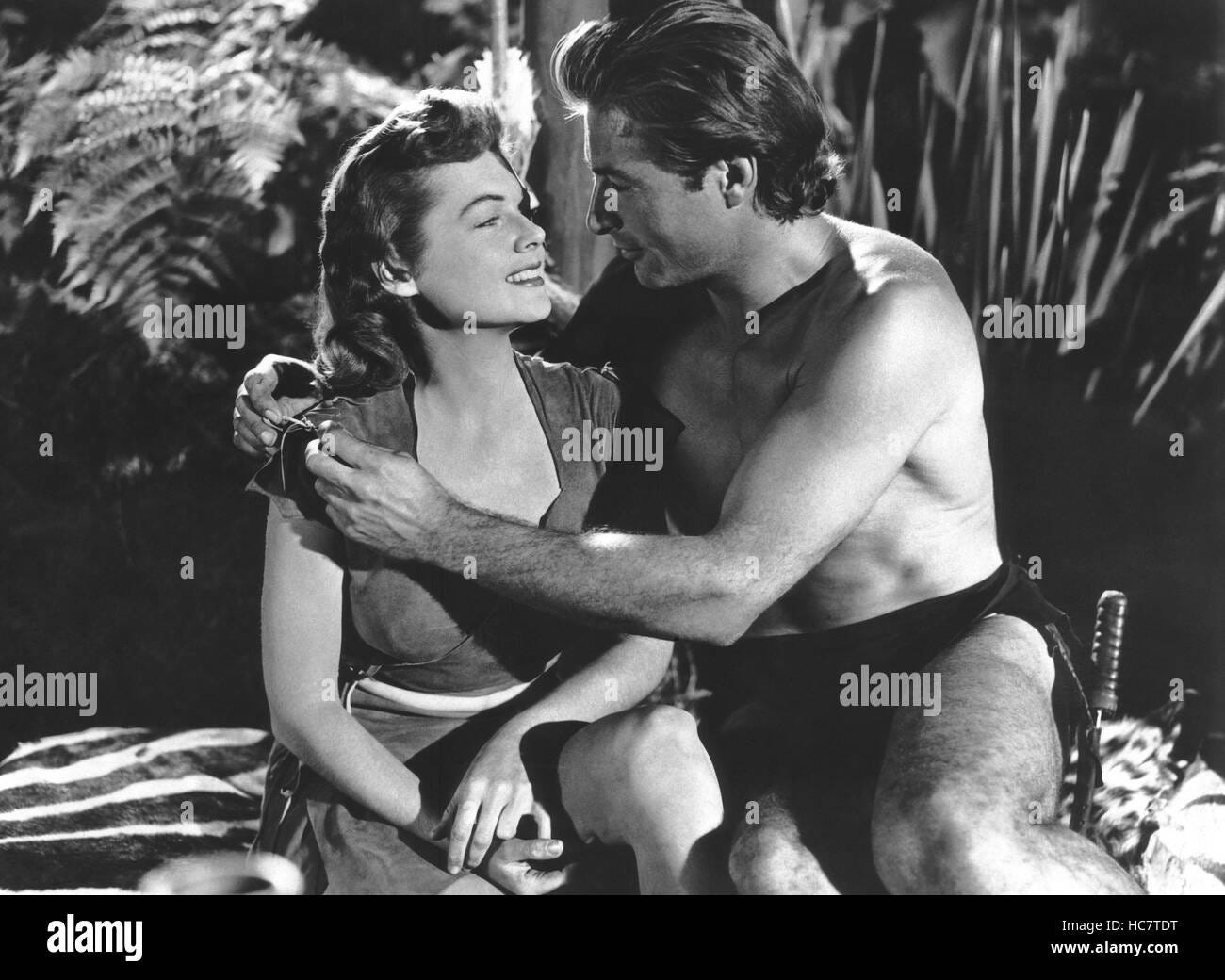
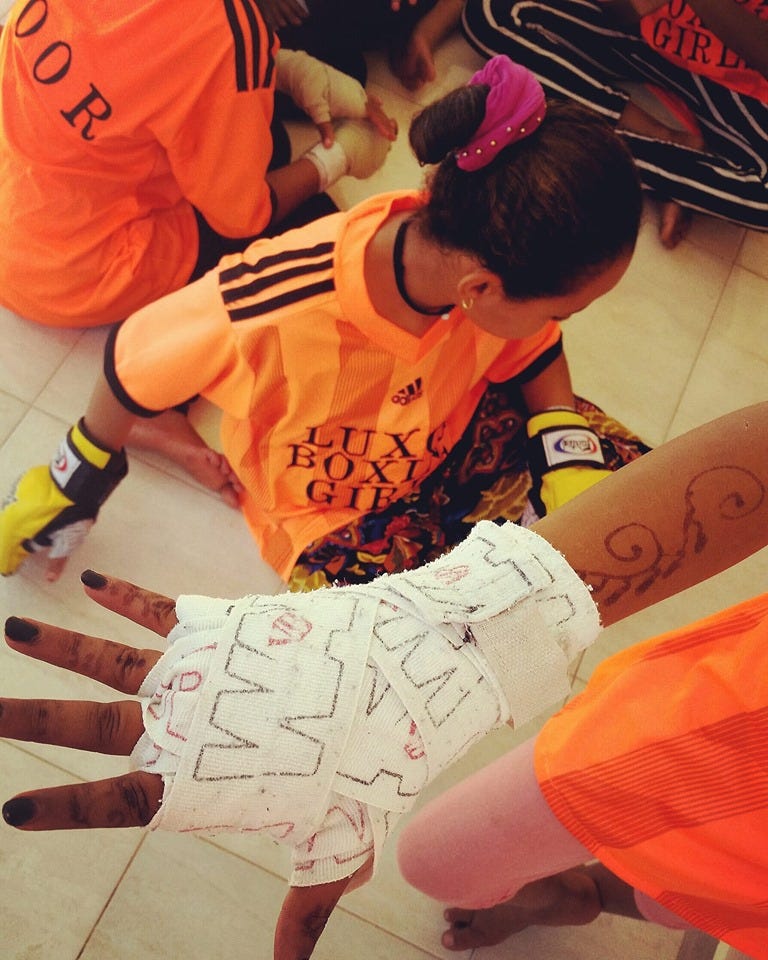
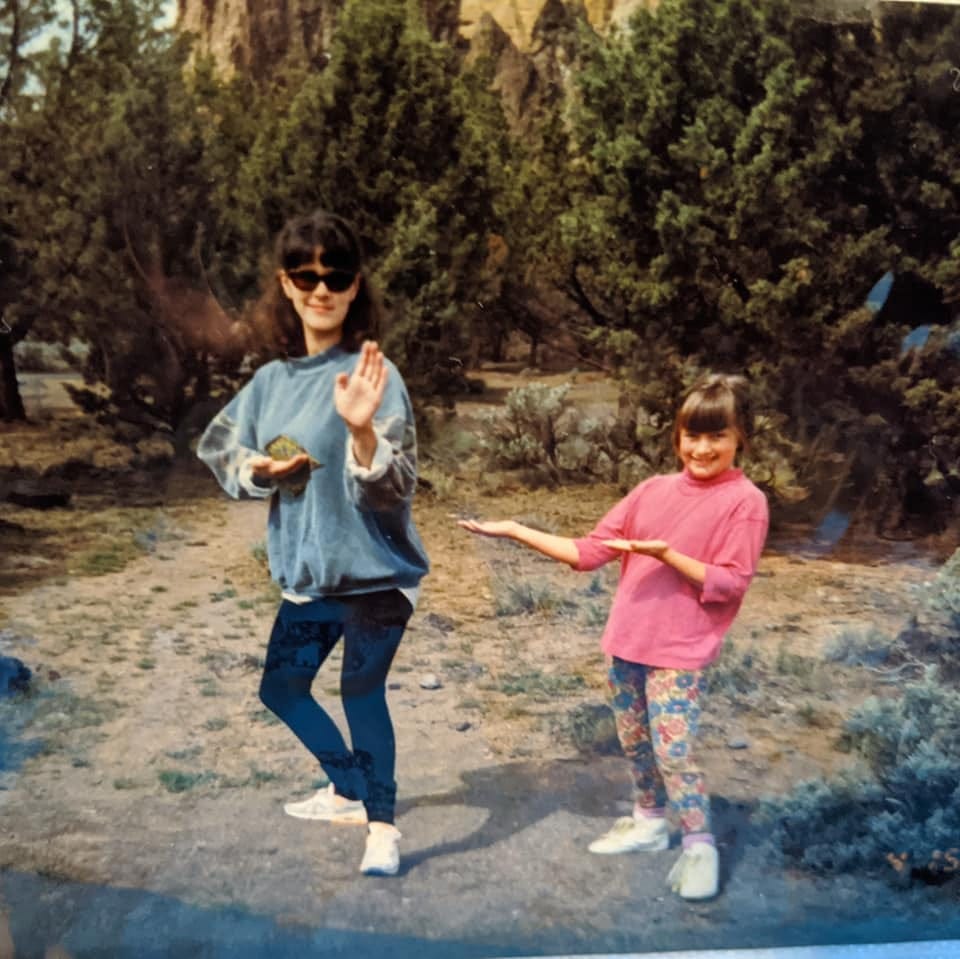
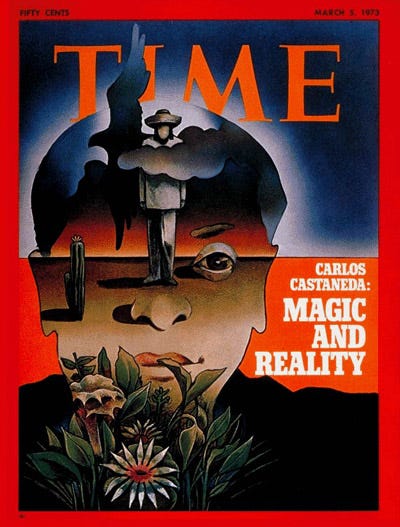
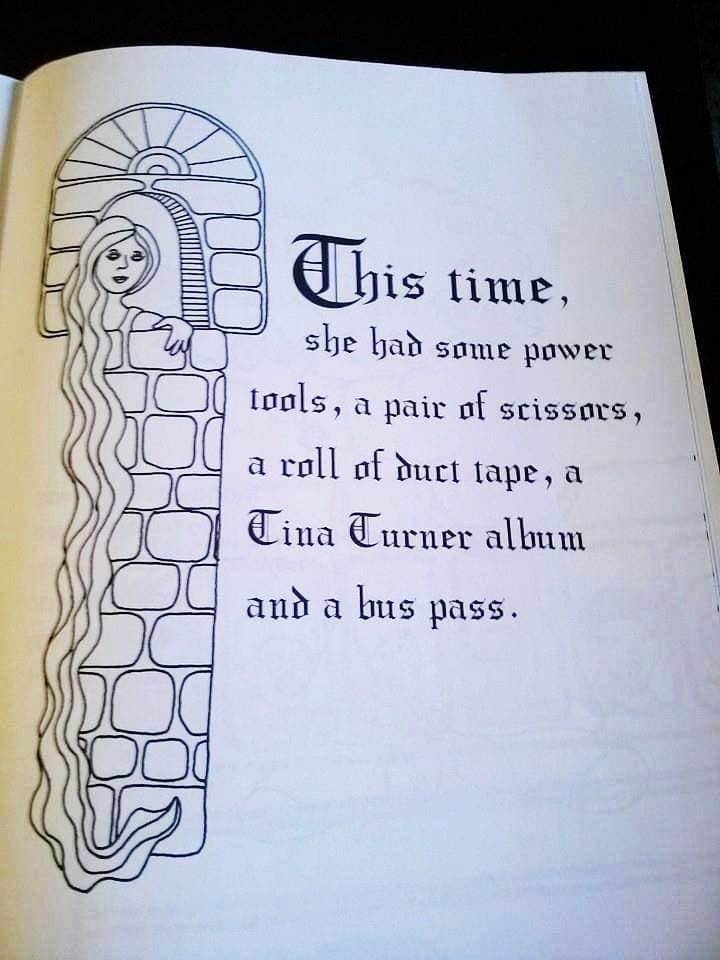
I was all set for more doom and gloom when I got blindsided with this wonderful inspirational article. Thanks, I needed that.
Interesting part biographical essay . There might be a movie coming out from this called “the Karate Kid Karen “. Kind of a heroes journey for you like for so many of us. Yes life can be difficult and today especially with the creeping head of the snake of totalitarianism infiltrating our society we have a bigger warrior fight
ahead. Onward.